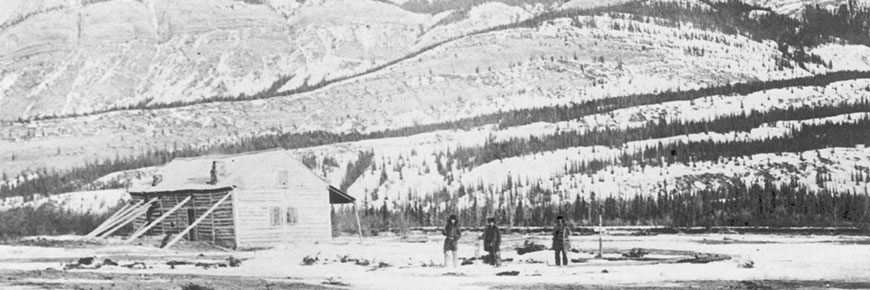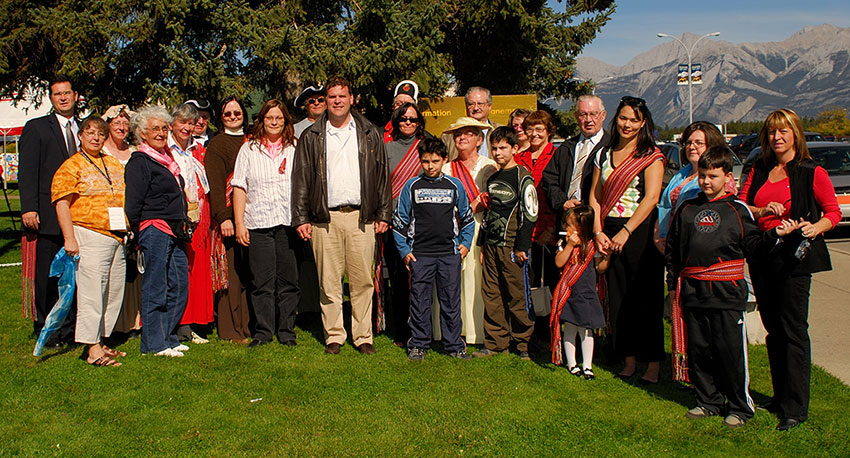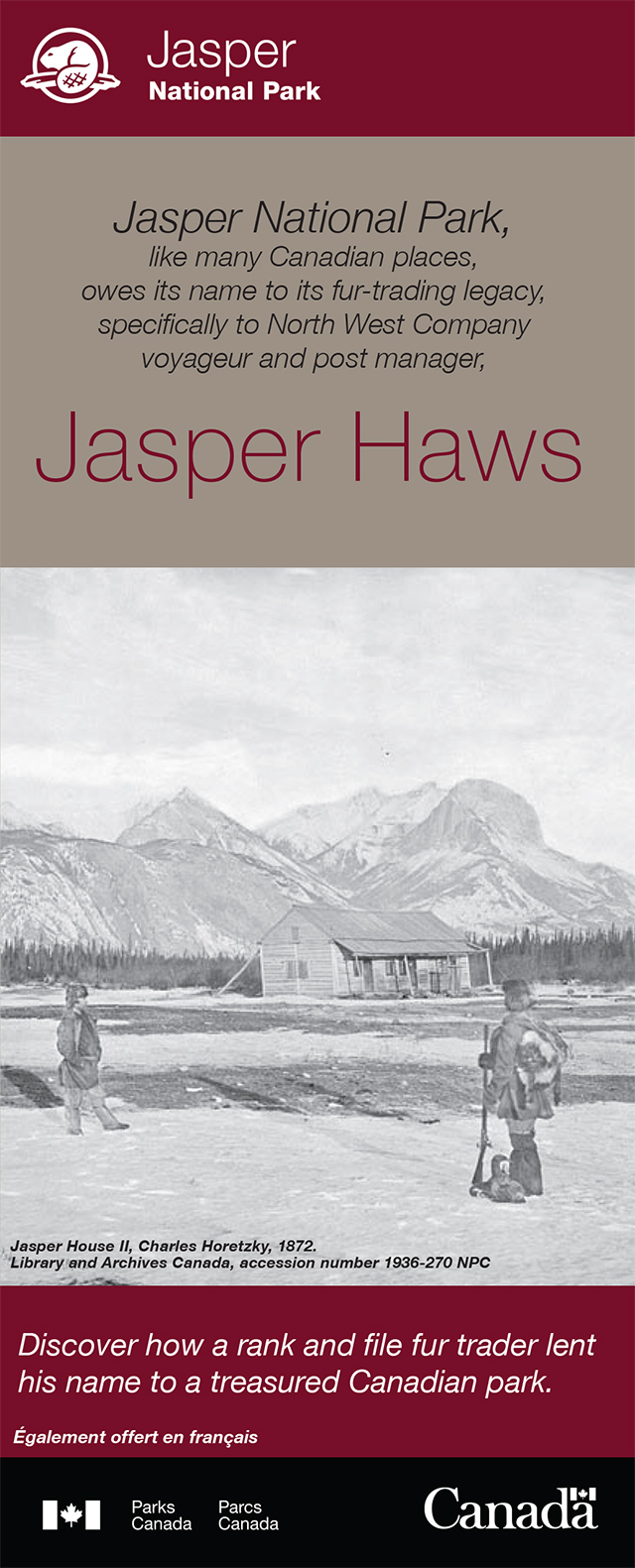
Library and Archives Canada
Culture and history
Jasper House National Historic Site
Jasper Haws
What’s in a name?
Jasper National Park, like many Canadian places, owes its name to its fur-trading legacy, specifically to North West Company voyageur and post manager, Jasper Haws.
The extraordinary journey of Jasper Haws
Born in 1770, Jasper was uprooted from his Maryland home during the American Revolution. His parents, United Empire Loyalists, joined a migration of people leaving the United States in order to maintain their loyalty to the British Crown.
Jasper remained with his parents in Sorel, Québec until, at the age of 25, he travelled to Montréal and entered the service of Mr. Canavan and Mr. Cazelet, affiliates of the North West Company. Hired as a middleman, Jasper's first job with the North West Company was to sit anywhere between the bow and stern of the boat (hence the name middleman) and paddle from Montréal to Fort William and then on to Red River for the winter. There, he learned the fur trade business and delivered goods to outlying trading posts.
From 1797 to 1802, Jasper remained in the service of the North West Company plying the waters of the Missouri. By 1804, he had worked his way west into the Athabasca River District (now Alberta). In 1815, after 20 years of service, Jasper was appointed manager of a post. His name became associated with the post and with the town and park that followed.
Gateway to the West
In 1813, the North West Company built Rocky Mountain Portage House on Brûlé Lake as a provision depot for brigades crossing the Athabasca Pass to the Pacific. When Jasper Haws took command of the post in 1815, it became known as “Jasper's House,” to avoid confusion with Rocky Mountain House on the North Saskatchewan River. Under the trained eye of Jasper Haws, the post became the centre of a modest and diverse community responsible for meeting transportation and supply needs, caring for horses grazing in the valley, and trading goods for meat and furs with Aboriginal groups, including Iroquois and Métis peoples.
Jasper married an Iroquois woman and fathered no less than five children - three boys and at least two girls. He remained at Jasper House until 1821. When the North West Company was forced to amalgamate with the Hudson's Bay Company, he was suddenly without work. Leaving his wife and daughters with family, Jasper returned with his sons to Québec. They homesteaded in Hinchinbrooke, Québec until his death in 1855. Haws Creek in the Châteauguay Valley still bears his name today.
Jasper's House
In 1830, under the control of the Hudson's Bay Company, Jasper House was relocated to the west bank of the Athabasca River, 1.4 km north of Jasper Lake. By that time, the site was a strategic point on two trans-mountain routes: one through the Athabasca Pass to the southwest and the second via Yellowhead Pass to the northwest. In addition, the post was optimally located for the movement of Aboriginal peoples travelling the historic route through the Snake Indian Pass into the upper Smoky River drainage area and into the Fraser River watershed and the interior of British Columbia.
For the next 20 years, the new Jasper House supported Hudson’s Bay Company brigade traffic over the mountains to the Columbia District and facilitated the transfer of trade goods and furs from east to west.
The post only operated sporadically after 1853, and fell into decline following trade reorganization. Trader Henry John Moberly ran the post seasonally from 1858 until 1861. Jasper House was closed officially by the Hudson’s Bay Company in 1884, although by that date the post had been abandoned for many years.
The name lives on
In 1907, Jasper Forest Park was created and the name Jasper was chosen because of its historic association with the area. In 1913, when the name Fitzhugh fell out of favour, the name Jasper was also adopted by the townsite within the park boundaries.
Jasper's legacy

Photo includes members of the Hanly, L’Hirondelle and Loyer Families along with The Minister of the Environment and Parks Canada, the Honourable John Baird, and members of Canada’s United Empire Loyalist and the Wilson Family from Hinchinbrooke, Quebec, representing the Chateauguay Valley Historical Society. Jasper 2007.
It is a wonder that a simple fur trader in a time and place of great flux can have his name immortalized and renowned throughout the world. This brochure was made possible by a 25-year intergenerational project undertaken by descendants of Jasper Haws - the Hanly's, the L'Hirondelle's, and the Loyer's with assistance from the Jasper Yellowhead Museum and Archives and the Chateauguay Valley Historical Society.
Related links
- Date modified :
